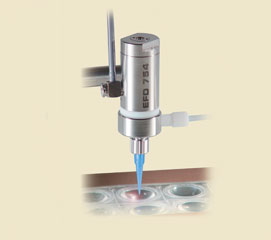 Three ways to solve your industrial aseptic valves problems
Three ways to solve your industrial aseptic valves problems
September 8, 2014 REDWIRE is news you can use from leading suppliers. Powered by FRASERS.
Posted by Nordson EFD
Nordson EFD, a division of Nordson Corporation, is the world leader in the design and manufacture of precision dispensin... Read more
Subscribe
Free REDWIRE e-newsletter

Processing plants and laboratory applications depend on industrial aseptic valves to consistently and accurately offer sterile processes.
The prevention of airborne or stagnant substances from the ambient air penetrating or migrating to critical zones or systems is crucial in protecting to be sealed applications from exterior elements.
Aseptic valves are critical pieces of precision equipment designed to be infallible when it comes to performing consistent and repeatable sterile applications.
From administering saline solutions to dispensing edible food processes, aseptic valve systems are designed to perform productive, trouble-free performance at a high standard of excellence.
When a professional, industry-grade aseptic valve falters, although the probability is low, best practice dictates to safeguard the component by following these simple troubleshooting guidelines geared to get valves back on track.
Visit nordsonefd.com for detailed specifications and more troubleshooting tips. Contact Nordson EFD directly for a no obligation consultation on our aseptic valves and other precision dispensing equipment solutions.
When fluid flow is a no-go
Check the reservoir air pressure, which may need to be increased. If the dispensing tip is not clogged or needs to be replaced, check whether the stroke adjustment is closed so that it can be opened instead.
Solidified fluid inside the valve is another possible cause: clean the fluid body to ensure its free from blockage.
When fluid drools after closure
Trapped air inside the fluid body is the culprit when fluid drools then stops after closing.
Entrapped air in the outlet section expands once valve closes, which causes extrusion until the air reaches atmospheric pressure. Degassing of materials must occur if the fluid contains entrapped air.
Also, purge the valve at a steady rate to allow airflow to go through the tip adapter; remove small tips for greater efficiency of airflow.
When you see seepage of fluids
Replace the fluid body in this situation because there is damage or distortion to the annular sealing ridge on the fluid body.
Due to excessive torque on the retaining screws, fluid is unnecessarily discharged resulting in leaks between the fluid body and diaphragm.
Share
Posted by Nordson EFD
Nordson EFD, a division of Nordson Corporation, is the world leader in the design and manufacture of precision dispensin... Read more